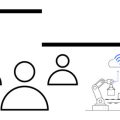1. Overview of Vocal Cord Dysfunction
What is Vocal Cord Dysfunction?
Vocal Cord Dysfunction (VCD), also known as paradoxical vocal fold motion, is a condition where the vocal cords involuntarily close when they should be open, making it hard to breathe in. This can lead to symptoms like shortness of breath, wheezing, throat tightness, and even a feeling of choking. VCD is often mistaken for asthma because the symptoms are similar, but treatment strategies are different.
Clinical Presentation
People with VCD commonly experience sudden episodes of breathing difficulty, especially during physical activity, exposure to irritants (like smoke or strong odors), or periods of high stress. Unlike asthma, these symptoms usually resolve quickly after the episode passes and do not respond well to inhalers or typical asthma medication.
Common Symptoms of VCD vs. Asthma
| Symptom | Vocal Cord Dysfunction | Asthma |
|---|---|---|
| Main Breathing Issue | Trouble breathing in (inspiration) | Trouble breathing out (expiration) |
| Noisy Breathing | Stridor (high-pitched sound) | Wheezing (whistling sound) |
| Response to Inhaler | Poor or none | Good improvement |
| Chest Tightness | Sometimes present | Commonly present |
| Coughing | Less common | Frequent symptom |
Prevalence in the U.S.
Vocal Cord Dysfunction can affect people of all ages but is most commonly diagnosed in teenagers and young adults. It is seen more frequently among female patients and athletes. In the United States, VCD is increasingly recognized by clinicians as an important cause of unexplained breathing problems, especially in emergency rooms and sports medicine clinics.
Who Is Most Affected?
- Teenagers and young adults (especially athletes)
- Women more than men
- Individuals with anxiety or high-stress lifestyles
- People exposed to environmental irritants such as smoke or chemicals
Diagnostic Criteria for VCD
The diagnosis of VCD is based on clinical assessment and may involve several steps to rule out other conditions like asthma. Common diagnostic tools include:
- Laryngoscopy: Visualization of vocal cords during a breathing episode to see inappropriate closure.
- Pulmonary Function Tests: Special breathing tests that show abnormal airflow patterns not typical for asthma.
- Detailed Medical History: Focused on identifying triggers and describing symptom patterns.
- Exclusion of Asthma: Lack of improvement with asthma medications helps differentiate VCD from asthma.
Recognizing VCD early is important so that patients can receive appropriate treatment, including evidence-based voice therapy approaches tailored to their specific needs.
Principles of Evidence-Based Practice in Voice Therapy
When working with individuals experiencing Vocal Cord Dysfunction (VCD), it’s essential to use therapy approaches that are grounded in evidence-based practice. This means making clinical decisions by integrating the best available research, clinical expertise, and patient values. Let’s break down how this framework guides the way speech-language pathologists (SLPs) choose and apply therapy interventions for VCD.
What is Evidence-Based Practice?
Evidence-based practice (EBP) combines three key components:
- Best Available Research: Using up-to-date scientific studies that support specific therapies or techniques.
- Clinical Expertise: Drawing from the therapist’s professional experience and skills.
- Patient Preferences and Values: Considering the individual needs, goals, and circumstances of the person receiving therapy.
The EBP Decision-Making Process
The following table summarizes how evidence-based decisions are made when planning voice therapy for VCD:
| Step | Description | Example in VCD Therapy |
|---|---|---|
| 1. Ask | Formulate a clear, answerable question about the patient’s needs | “Which breathing techniques reduce VCD symptoms during exercise?” |
| 2. Acquire | Search for the best available research evidence | Review recent studies on voice therapy and respiratory retraining for VCD |
| 3. Appraise | Evaluate the quality and relevance of the research | Select high-quality studies with results applicable to your client population |
| 4. Apply | Integrate research findings with clinical expertise and patient preferences | Choose techniques like relaxed throat breathing based on evidence, therapist experience, and what works best for the client’s lifestyle |
| 5. Assess | Monitor outcomes and adjust as needed | Regularly track symptom changes and modify therapy if needed |
Why is EBP Important in Voice Therapy?
Using an evidence-based approach ensures that people with VCD receive care that is both effective and tailored to their unique situation. It helps SLPs avoid outdated practices and focus on strategies proven to work, leading to better outcomes and greater satisfaction for clients.
An Example: Applying EBP for a Teen Athlete with VCD
If a high school soccer player struggles with VCD symptoms during games, an SLP would:
- Ask: What techniques help athletes control VCD episodes?
- Acquire: Find research about exercise-induced VCD management.
- Appraise: Check which studies are most relevant to teenagers in sports settings.
- Apply: Use proven exercises like diaphragmatic breathing combined with personalized coaching.
- Assess: Track progress over time and get feedback from both the athlete and their coach.
The Takeaway on Evidence-Based Voice Therapy for VCD
An evidence-based framework ensures that therapy choices aren’t random—they’re supported by science, shaped by experience, and focused on what matters most to each person seeking help for Vocal Cord Dysfunction.
![]()
3. Behavioral and Physiological Voice Therapy Techniques
When it comes to managing Vocal Cord Dysfunction (VCD), evidence-based voice therapy focuses on helping people gain control over their vocal cords and breathing patterns. The most effective approaches are behavioral and physiologic techniques that you can use in everyday life. Below, we discuss some of the most commonly used strategies.
Relaxed Throat Breathing
This technique is at the core of VCD management. It teaches you how to breathe with your throat muscles relaxed, so your vocal cords do not close up when they shouldn’t. Therapists often guide patients through gentle inhalation and exhalation exercises, focusing on breathing in through the nose and out through pursed lips or with a soft “shhh” sound. Practicing these exercises can help reduce symptoms during both routine activities and sudden episodes of VCD.
Vocal Hygiene Education
Taking care of your voice is crucial for people with VCD. Vocal hygiene means adopting habits that keep your vocal cords healthy and prevent irritation. This includes staying hydrated, avoiding yelling or whispering, minimizing exposure to irritants like smoke or strong fumes, and managing acid reflux if present. Simple lifestyle changes can make a big difference in reducing VCD flare-ups.
| Vocal Hygiene Tip | Everyday Example |
|---|---|
| Stay Hydrated | Carry a water bottle and sip throughout the day |
| Avoid Irritants | Steer clear of smoking areas or strong cleaning products |
| Limit Voice Strain | Use a microphone when speaking to large groups instead of shouting |
| Manage Reflux | Avoid spicy foods if you notice heartburn affects your throat |
Rescue Breathing Strategies
If you feel an episode coming on, rescue breathing techniques can be a lifesaver. These methods are designed to quickly open the airway and calm breathing. One common strategy is called “sniff breathing,” where you take short, quick sniffs in through your nose followed by a slow, relaxed exhale through your mouth. Another approach is exhaling with pursed lips or gently blowing out as if cooling hot soup. Practicing these techniques regularly helps you stay calm and regain control during a VCD attack.
Summary Table: Common Behavioral & Physiological Approaches for VCD
| Technique Name | Main Purpose | How It Helps with VCD |
|---|---|---|
| Relaxed Throat Breathing | Reduces tension in throat muscles during breathing | Keeps vocal cords open, preventing abnormal closure during attacks |
| Vocal Hygiene Education | Promotes healthy habits for vocal cord care | Lowers risk of irritation and inflammation that trigger symptoms |
| Rescue Breathing Strategies | Provides immediate relief during episodes | Quickly restores normal airflow and reduces anxiety during VCD events |
Working with a Speech-Language Pathologist (SLP)
A licensed SLP will personalize these techniques based on your specific triggers and needs. They’ll provide hands-on training so you can practice and master each skill, making it easier to apply them during daily activities or in stressful situations. Regular sessions also offer support, motivation, and troubleshooting along the way.
4. Multidisciplinary Collaboration and Patient Education
The Value of Interdisciplinary Teamwork
When it comes to treating Vocal Cord Dysfunction (VCD), working together as a team makes a big difference. Speech-language pathologists, pulmonologists, and allergists each bring unique expertise. Pulmonologists help rule out or manage breathing problems like asthma, while allergists can identify triggers such as allergies that may worsen VCD symptoms. By collaborating, these specialists ensure patients get the most accurate diagnosis and effective treatment plan.
How Each Specialist Contributes
| Specialist | Role in VCD Management |
|---|---|
| Speech-Language Pathologist | Leads voice therapy, teaches breathing techniques, provides education on vocal health. |
| Pulmonologist | Assesses lung function, manages co-existing respiratory conditions, helps differentiate VCD from asthma. |
| Allergist | Identifies and treats allergies that may trigger or worsen VCD episodes. |
Culturally Relevant Patient Education for American Patients
Educating patients about VCD is more effective when it reflects their everyday experiences and cultural background. For American patients, this might mean using familiar examples—like explaining how environmental allergens common in certain states can be triggers, or relating breathing exercises to sports activities popular in local communities. It’s also important to consider language preferences and health literacy levels to make sure instructions are clear and accessible.
Key Strategies for Effective Patient Education
- Use Everyday Language: Avoid medical jargon; use simple terms patients recognize.
- Relate to Daily Life: Connect therapy recommendations to common American routines (e.g., school sports, workplace stress).
- Visual Aids: Incorporate diagrams or handouts that illustrate breathing techniques.
- Diverse Resources: Offer materials in different formats (videos, pamphlets) and languages when needed.
- Family Involvement: Encourage family members to participate so support extends beyond clinic visits.
Example: Adapting Breathing Exercises for American Patients
| Exercise Name | Description | Cultural Adaptation Tip |
|---|---|---|
| Pursed-Lip Breathing | Breathe in through your nose and out slowly through pursed lips. | Compare to blowing out candles at a birthday party—a familiar activity for many Americans. |
| Sip-Sip Blow Technique | Sip air in small amounts, then blow out gently. | Relate the motion to sipping through a straw, a common experience for kids and adults alike. |
This team-based approach combined with culturally tailored education empowers patients to actively participate in their care, leading to better outcomes in managing Vocal Cord Dysfunction.
5. Measuring Outcomes and Long-Term Management
Overview of Outcome Measures
Tracking progress is an important part of voice therapy for vocal cord dysfunction (VCD). Measuring outcomes helps both the patient and the speech-language pathologist see what’s working and where changes may be needed. Here are some common outcome measures used in evidence-based voice therapy:
| Outcome Measure | Description | Example Tools |
|---|---|---|
| Patient Self-Report | Surveys or questionnaires completed by the patient to rate their symptoms, comfort, and ability to use their voice. | Voice Handicap Index (VHI), Visual Analog Scales (VAS) |
| Clinical Assessment | Direct observation and evaluation by a clinician during exercises or daily conversation. | Auditory-perceptual ratings, standardized assessment forms |
| Instrumental Analysis | Use of technology to measure voice quality, pitch, loudness, and airflow. | Acoustic analysis, laryngeal imaging |
| Functional Outcomes | The ability to return to daily activities like speaking at work or school without discomfort. | Patient interviews, functional communication tasks |
Follow-Up Practices
After initial therapy sessions, regular follow-up appointments are key to long-term success. These visits allow your therapist to check on your progress, refresh exercises as needed, and answer any new questions that come up. In the U.S., it’s common for follow-ups to be scheduled every few weeks at first, then gradually spaced out as you gain confidence managing your VCD symptoms independently. Telehealth options are also widely available for convenient check-ins from home.
Typical Follow-Up Schedule
| Time After Initial Therapy | Purpose of Visit |
|---|---|
| 2–4 weeks | Review progress, adjust exercises if necessary |
| 1–3 months | Troubleshoot challenges, reinforce techniques, encourage independence |
| 6 months & beyond (as needed) | Long-term check-in; address any recurrence of symptoms |
Long-Term Management Strategies for Ongoing Vocal Health
Sustaining healthy vocal habits is just as important as treating acute symptoms. Here are some strategies recommended in American practice for ongoing management of vocal cord dysfunction:
- Daily Voice Exercises: Continue gentle breathing and relaxation techniques even after symptoms improve.
- Avoid Vocal Strain: Limit yelling or whispering, especially in noisy environments like sports events or concerts.
- Lifestyle Modifications: Stay hydrated, avoid irritants like smoke or allergens, and manage acid reflux if present.
- Mental Wellness: Practice stress-reduction methods such as mindfulness, yoga, or counseling when needed—stress can trigger VCD episodes.
- Create a Support Network: Let family members, teachers, coaches, or coworkers know about your needs so they can help support your vocal health journey.
- Regular Check-Ins: Schedule annual or as-needed visits with your speech-language pathologist for ongoing support and guidance.
Your Role in Long-Term Success
The best results come when you take an active role in your own care. Keep practicing what you’ve learned in therapy, pay attention to how your voice feels during different activities, and reach out to your healthcare team if you notice any changes. By combining professional support with self-care habits, you’ll have the tools you need to keep your voice strong and healthy for years to come.


